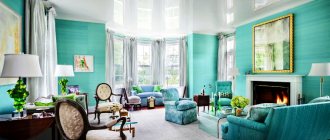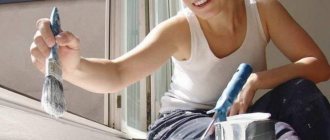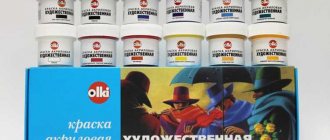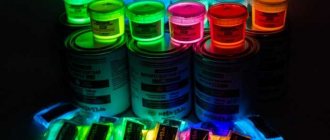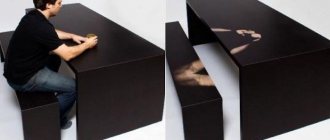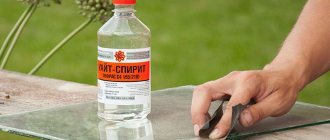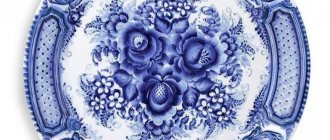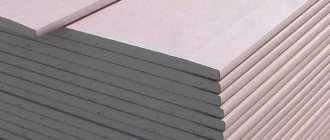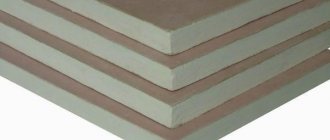Alkyd paint - what is it?
Alkyd enamel means a universal composition based on organic solvents, such as purified kerosene. The mixture also contains alkyd varnish, a number of fillers (sand mixture, oil, marble or granite chips, etc.), solvents (turpentine or white spirit) and color pigments.
The composition of the material is determined by the areas of its use. Products for wood processing are enriched with antiseptic additives, and for metal products - with components that protect against corrosion.
Advantages and disadvantages
Alkyd paints are popular due to several advantages. Among them:
- Ease of distribution. Like traditional paint, alkyd enamel is quite easy to apply. The main thing is to adhere to the manufacturer’s recommendations indicated on the packaging and follow personal safety rules.
- Wide range of applications. On sale there are series of enamels for exterior and interior work, painting windows and doors, furniture products, heating radiators and other interior items. It is allowed to combine different shades to realize original ideas.
- Anti-corrosion characteristics. Alkyd compounds prevent corrosion on metal products.
- Fast polymerization. The paint dries within 24 hours. Moreover, after an hour it ceases to be sticky, which allows you to continue repairs indoors.
- Low cost. Compared to many other types of paints and varnishes, alkyd enamel is much cheaper. In conditions of economic instability, this is an important factor.
However, the product also has negative sides. The key disadvantage is considered to be low temperature resistance. Use of the paint is permitted in conditions with temperatures of +5…+30°C.
There is an opinion that alkyd paints and varnishes emit a strong unpleasant aroma. But this is partial truth, because... Manufacturers of modern paint series refuse to use toxic substances with an intense odor. At the same time, the composition remains chemical components that are dangerous to human health.
Pros and cons of alkyd coating
Paints and varnishes have certain advantages and disadvantages. Among the obvious advantages are:
- Resistant to moisture.
- High density of the resulting film.
- Excellent wear-resistant qualities.
- Resistance to mechanical stress after drying.
- Possibility of using various detergents when cleaning the surface.
- Fast drying.
- Possibility to save the initial color.
- Ease of use.
- A wide range of shades and colors.
- Non-corrosive, which allows it to be used on metal surfaces.
Negative qualities include a low degree of environmental safety. The worker must use a respirator while working. It is advisable to ventilate the room during operation, which can be very problematic in winter. These substances are susceptible to easy combustion when exposed to open flame.
Another disadvantage may be the limited color range. But manufacturers produce different colors, so you can create the desired color yourself.
Composition of alkyd paints
Polyester resins are common in the paint and varnish industry. In addition, the following additives are used for the production of alkyd coatings:
- Film formers.
- Diluents and solvents.
- Pigments.
- Fillers.
- Hardeners.
- Excipients.
Film formers
The key component of enamel is the film former. The following types of additives are found in alkyd mixtures:
- Pentaphthalic.
- Glypthal.
- Ethrifthalic.
- Xyphthalic.
Releases with pentaphthalic elements create a thick film with good resistance to mechanical stress. Hypthal foams dry quickly, but do not provide protection from precipitation and other influences. Therefore, their main area of application is interior work.
Pigments
To ensure that the finishing layer has a characteristic shade and opacity, special pigments are added to the paintwork composition. They are insoluble fine powders. Depending on the source material, pigments can be natural or inorganic.
They affect the color saturation and durability of the paintwork. In addition to decorative qualities, the components also determine the performance characteristics of the alkyd composition.
Some additives create a protective film, preventing moisture penetration and rust.
Fillers
Needed to improve the technological properties of paints and varnishes. They affect hiding power, opacity, viscosity and wear resistance.
Carbonates, barites and silicates are used as fillers. Granite and quartz make the mixture resistant to wear, and mica protects the surface from high temperature and electrification.
To increase the degree of particle dispersion, manufacturers add analogues of organic fillers to the composition.
Carbonates are used as paint fillers to improve viscosity and wear resistance.
Supplements
Some components are needed to speed up the drying process, others - to increase the resistance of the coating to negative factors and maintain the plasticity of the paint. Anticoagulants and stabilizers promote uniform distribution of the composition over the surface without separation.
Solvents and thinners
Solvents are selected taking into account the fat content of alkyds. When the indicator is high, aliphatic components are used, when the indicator is medium, a mixture of solvents is used, and when the indicator is low, aromatic high-boiling additives are used. Thinners are needed to change the flow properties of paints and varnishes.
Paint composition and properties
The basis of any alkyd paint is a special varnish and a solvent that allows you to obtain the desired consistency. A variety of fillers that provide certain properties and additives (for example, a protective antiseptic) are also used. Pigments give paint the desired color.
The alkyd-based varnish used in the production of paint can be glyphthalic or pentaphthalic. For the manufacture of paints, pentaphthalic varnish is mainly used, which consists of alkyd resins mixed with vegetable oils, glycerin and rosin. Solvent is added to thin the paint.
The properties of the material depend on the specific type of product. After application and complete drying, it may have:
- increased degree of density of the protective layer;
- excellent water-repellent properties;
- resistance to mechanical damage;
- resistance to aggressive detergents and cleaning agents.
In addition, alkyd paint for metal can impart anti-corrosion properties to the metal; over time, the treated surface does not lose its original color and does not turn yellow.
A wide range, affordable price and ease of use are another plus in the treasury of advantages of paints of this type.
It is worth remembering that the toxicity of paint at the stage of its use is quite high; many will not like the strong smell of the material. However, after the treated surface dries, the environmental issue is removed and the harmful effects are reduced to zero.
The presence of solvents in alkyd paints makes them a fire hazard, so operation requires strict adherence to safety measures.
Areas of application
Alkyd enamels not only prevent the negative effects of external factors on the treated surface, but also protect the product from corrosion. The range of applications for such mixtures is quite extensive. Today they are used for:
- Treatment of metal roofing, drainage communications, fencing, heating radiators and benches.
- Painting wooden structures: log walls, facade parts of frame structures, etc.
- Decoration of concrete slabs, asbestos-cement screed and brickwork.
To form a protective film on a concrete or wooden surface, it is recommended to purchase an alkyd composition with urethane fillers.
Advantages and disadvantages
Any finishing material has a set of factors that distinguishes it from others. A review of the advantages and disadvantages allows consumers to make their choice in favor of one or another paint coating.
The advantages of alkyd enamels are:
- ease of application and high drying speed;
- elasticity;
- high resistance to fading throughout the entire service life;
- long service life;
- to clean dirt, the possibility of using household chemicals;
- small consumption per 1 square meter of area.
Among the obvious advantages, a negative point should be noted - alkyd enamel is toxic, but only at the time of finishing work on its application. Therefore, when applying, careful protection of the respiratory tract and ventilation of the room is required.
After complete drying, alkyd enamel does not pose a health hazard, so it can be used for interior decoration even in a children's room. But it is believed that water-dispersion based paints are safer.
Classification of alkyd paints
Paints and varnishes based on alkyd particles differ in properties. There are mixtures on sale with a wide range of uses and specialized releases for strictly designated purposes.
Some paint packages contain markings GF-230, PF-115, etc. They are necessary for easier orientation in the types of paints.
Enamel
They are produced on a varnish basis and are distinguished by their versatility. They can be used to paint almost any type of surface, including asbestos-cement slabs, brickwork, wood, metal, etc.
There are the following types of enamels on the market:
- Glypthal. They quickly harden and acquire the declared properties. Suspension GF-230 is quite in demand. Enamel is used as interior paint, because... subject to wear and destruction due to negative external influences.
- Pentaphthalic. A common type of enamels with moisture protection and abrasion resistance. It is quite difficult to wash off or erase such a coating.
The advantage of enamel suspensions is their increased water resistance.
Alkyd enamel paint.
Oily
Drying oil is used as the main component. Depending on the degree of consistency, there are:
- Liquid.
- Pasty.
In addition, they are classified taking into account the nature of the gloss:
- Matte.
- Semi-matte.
- Glossy.
Oil suspensions are popular due to the ability to choose the optimal gloss intensity. Matte subtypes mask minor defects and are suitable for cladding decorative items in the living room.
Semi-matte series create a protective film from moisture, so they can be used in buildings with high humidity.
Glossy paints are needed for decorative purposes. With their help, you can emphasize any element in the interior or divide the room into zones.
Compounds for working with wood
PARADE
This domestically produced enamel first appeared on the market almost 25 years ago. It is distinguished from other materials by its almost complete absence of odor; even when dried, it will not release harmful or toxic substances into the environment. The paint has a special certificate that allows it to be used when decorating premises in children's or medical institutions. Despite the rather high cost, this finishing material is widely popular among consumers.
More: Top 10 best adhesives for porcelain tiles, how to choose adhesive for porcelain tiles
After complete drying, the paint becomes very resistant to abrasion. In addition, it has excellent adhesion, so it can be used to work with surfaces of any nature - wood, metal, plastic, cardboard, polymer materials and so on. There are several options on sale with increased heat resistance, so even heating radiators can be treated with paint. Working with paint is easy and convenient, but professional painters still recommend diluting it with a solvent, since it is very thick.
Advantages:
- Dries very quickly;
- Can be used in social spaces;
- Sticks well on any surface;
- Allowed to be used for external and internal work.
Flaws:
- It is advisable to dilute with a solvent, otherwise the consumption will be quite large.
Alkyd paint PARADE
Caparol
This German company produces alkyd-based paints and varnishes designed specifically for working with wood. At this point, the company is unrivaled throughout the world. After drying, a film with a Hydroperl effect is formed on the surface of the wooden product, due to which the material is fully protected from the negative effects of moisture. In addition, the paint formula contains original antifungal components that can effectively protect wood from the formation of mold and fungi. Users in their reviews also note the almost complete absence of odor - when painting indoors, you do not have to worry about ensuring ventilation.
If the paint is used for exterior work, then you must remember that it will have to be renewed approximately once every four to five years. However, this point will directly depend on climatic conditions: in a dry climate this will have to be done much less often than in a humid climate.
Advantages:
- Perfectly protects the wooden base from moisture, mold and fungi;
- The products are practically free of foreign odor;
- Does not fade in the sun throughout its entire service life;
- Optimal consistency - no need to dilute the paint;
- It is applied evenly to the surface: no drips form, and there are practically no splashes.
Flaws:
- Designed for wood floors only;
- Needs regular updating.
Alkyd paint Caparol
Alpina
The high quality of production of this paint and varnish coating is evident immediately after opening the can. The paint is characterized by an excellent consistency, due to which it is very easy to apply to the substrate. There are no drips during operation, and the paint itself covers the surface well. The composition is very elastic - it penetrates deep into irregularities, due to which minor roughness will be smoothed out, the surface will become perfectly smooth.
An increased level of elasticity of the paint and varnish coating was achieved largely due to the presence of polyurethane in the formula. The material is optimally suited for interior work, largely due to the fact that there is practically no foreign odor.
Advantages:
- Good consistency - no need to thin the paint;
- Fits perfectly on the base;
- Polyurethane ensures the elasticity of the composition, allowing the coating to withstand physical stress, including impacts, as well as negative atmospheric influences;
- Huge selection of colors and shades;
- The material is practically odorless;
- There is a heat-resistant ruler for finishing radiators.
Flaws:
- Quite expensive.
Alkyd paint Alpina
Dulux
This company produces paint and varnish compositions for almost all occasions. In particular, there are universal paints that can be used to process not only wood, but also metal; you can purchase options for interior or exterior work. The choice of colors and shades here is also very wide. Even professional painters were able to appreciate the paint from this manufacturer. Regardless of the application technology, the material does not begin to flow from the surface, is distributed as evenly as possible over it, and dries in the shortest possible time.
More: Top 10 laser levels
The composition contains components that can protect against moisture, corrosion processes, and mold. In addition, the paint from this company will not fade in direct sunlight. When compared with products manufactured by European corporations, this material is no worse in its performance characteristics.
Advantages:
- A very large selection of colors and shades;
- The paint forms an even layer, making base defects invisible;
- Dries very quickly;
- When applied, it does not form streaks;
- The formula contains additives that prevent the formation of corrosion, mold and other defects in the base.
Flaws:
- The smell is very weak, but very specific;
- Decent price.
Dulux alkyd paint
Tikkurila
It is not surprising that the products of this company were in first place in this part of our rating of the best manufacturers of alkyd paints. It has been on the market for a century and a half. During this time, the company was able to establish itself as a manufacturer of very high-quality paints and varnishes that do not harm the environment at all. All alkyd paints produced under this brand have an advantageous difference from their competitors: they are characterized by universal use, they are convenient to use, the materials also resist wear well and do not have a strong odor.
The line includes paints intended for wood and compositions for working with metal. Both home craftsmen and experienced users speak unanimously about the durability of the coating, which can last for many years.
Advantages:
- Absolutely environmentally friendly;
- Durable and resistant coating;
- The range includes about 20,000 shades;
- There are options for working with metal and wood;
- The smell is very weak.
Flaws:
- It costs significantly more than others.
Alkyd paint Tikkurila
Color palette of alkyd paints
The shade palette of alkyd paints and varnishes is not wide enough. But it can be diversified by tinting. To do this, you should buy a suitable dye and combine it with the main color. You can also try mixing several dyes to get an unusual shade.
Each type of enamel has a color range. Thus, the PF-223 series includes 17 tones, and the GF-230 includes shades such as milk, coffee, chocolate, etc. Aerosol paints in cans also have a wide selection.
Black, brown and white colors are suitable for interior work.
Alkyd and acrylic paint, what is the difference?
To understand the main difference from acrylic, you need to understand the composition and drying process.
Alkyd paint - the film is formed in two stages. The first involves the weathering of solvents and the formation of the film itself. The second takes 14 days - alkyd resins stick together under the influence of oxygen. These processes form a film that cannot be dissolved by weak solvents such as alcohol, gasoline, kerosene, white spirit.
Acrylic paint - a film is formed only when the solvent dries. Dries in 10-15 minutes, complete drying takes up to 4 hours. They are more often used for decorative purposes indoors, since in most cases there is no smell. Main advantages:
- drying time;
- rich colors;
- environmental friendliness.
Is it possible to paint with acrylic paint over an alkyd layer?
- You cannot apply two-component acrylic - it is an aggressive, incompatible environment.
Is it possible to apply alkyd paint to acrylic paint?
- It is possible, provided that the acrylic is two-component, and the alkyd is 1-component.
Differences between paint and enamel
A composition based on filler, color pigment, solvent and binding additives is called paint. The desired shades are obtained by mixing the pigmenting components. The protective film is created by polymer particles. Other inclusions are necessary to create haze, fire and moisture resistance and other technological properties.
The pigment, which consists of resin or varnish, is called enamel. Such paints and varnishes contain organic solvents, fillers and additives of natural origin. The required shade is created using red lead, soot, titanium dioxide and ocher. The thickness of the consistency is regulated using construction solvents, such as turpentines, solvents and white spirits.
Application area
Alkyd materials contain organic solvents, which ensures their high adhesion to any surface. This coating helps protect the product from adverse environmental factors and prevents metal corrosion .
The product is not always prepared before work using the stripping method. For minor traces of rust, simply apply a primer before painting. For metal surfaces, you can purchase special alkyd materials. They are used to cover:
- Roofs.
- Metal fences.
- Pipelines.
- Heating radiators.
- Benches.
- Other products made of galvanized metal.
These products contain corrosion inhibitors. There are also separate products for wooden surfaces. This paint can be applied to log and cobblestone walls. The composition of such paints additionally includes antiseptics . For a base made of cement , concrete or brick, you can purchase universal enamel.
Paint selection criteria
When going to the store to buy paint, you need to be able to decipher different markings and symbols. This will allow you to narrow the selection segment to the required quantity and eliminate series that are incompatible with the type of surface.
An important criterion is the material of the coating that will be painted. Specialized compounds have been developed for metal, wood, plaster and stone. Next, it’s worth calculating the surface area in square meters in order to plan the average consumption of the substance.
Numerical and alphabetic designations
The GF and PF markings indicate that the series belongs to the glyphthalic or pentaphthalic group. NC refers to nitrocellulose enamels, which dry quickly and create a pleasant gloss on the surface.
The designation KO indicates the presence of organosilicon polymers in the composition, which counteract atmospheric and temperature influences. CS are chemically resistant suspensions designed to protect metal substrates.
The FA marking is found in the description of oil-phenolic enamels.
Also in the classification of alkyd enamels there are digital designations:
- Enamels for external painting works.
- Compositions for internal use.
- Preservation materials that are used as temporary covering.
- Hydrophobic models.
- Releases to repel pests.
- Oil and petrol resistant.
- Chemically resistant.
- Heat resistant.
- Electrical insulating.
Paint Features
Alkyd resins are a viscous substance from yellow to dark brown. They are obtained by the reaction of polyhydric alcohols and monocompound fatty acids with the participation of carboxylic acids. Another important component is alkyd varnish . It serves as the main element of alkyd enamel.
Heat-polymer and pixotropic substances are often added as auxiliary components to alkyd-based paints. They are necessary to improve performance and allow the composition to remain on the surface without the formation of drips.
These additives make it possible to obtain an even and uniform layer of uniform thickness during application to the surface . Thermal polymer substances reduce the drying time of the finishing material. Some paints contain antifungal components. This allows you to protect the painted surface from the negative effects of fungi.
Features of using alkyd paint
Alkyd coatings are easy to apply and do not require special painting skills. Before spreading the paint, you need to prepare the surface and wash off the previous coating, traces of dirt and grease. It may be necessary to apply a coat of primer and remove the old cladding. Painting is done using a brush, roller or spray gun. In addition, necessary supplies include solvent, masking tape, and personal protective equipment (gloves and a respirator).
Dilution of the composition
It is necessary to dilute the paint to reduce the viscosity of the composition. A good solvent is white spirit, which is present in the production of the working mixture and guarantees the absence of dangerous chemical reactions.
The use of cans simplifies the application process, because... The paint is already presented in the optimal consistency and is suitable for application.
A good solvent for thinning paint is white spirit.
Enamel consumption
The optimal consumption of alkyd enamel is 150 g/sq.m. m. 1 liter of mixture is enough to paint approximately 10 square meters. m of surface. The exact consumption is determined by the consistency and type of solvent. In addition, the indicators also depend on the specifics of the surface being painted. Thus, metal products require less mixture than concrete or wood.
Features of practical application
Alkyd paints are effective to use and do not require special painting skills. Before application, it is necessary to clean the surface from the previous coating, wash it of dirt and treat it with a degreasing compound. For painting you will need:
- brush, roller or spray gun;
- solvent;
- masking tape;
- respiratory mask and gloves.
The composition is diluted to reduce the viscosity of the composition. White spirit is optimal as a solvent. It is used in the mixing process, which guarantees the absence of negative chemical reactions. Using aerosol cans greatly simplifies the process - the paint in them is already in the optimal consistency and is ready for application.
In order to obtain a durable and strong coating, alkyd enamel is applied in several layers.
If painting work takes place indoors, it will be necessary to provide high-quality exhaust and ventilation - this is due to the toxicity of the components contained in the composition. Also, it is necessary to work with gloves and a respirator mask.
Enamel consumption
The average coating rate for alkyd enamels is 150 g/m2. As a rule, one liter should be enough to treat ten square meters of surface. It all depends on the consistency of the enamel, as well as the solvent used for dilution and the characteristics of the surface. Painting metal structures will be more economical than treating similar surfaces made of wood or concrete.
Before painting, it is strongly recommended to calculate the amount of work to be done in advance in order to purchase the optimal amount of enamel.
Popular manufacturers
The following companies enjoy a good reputation and positive customer reviews:
- Kudo. It produces high-quality products that are used for painting car body parts, tiles, wood and metal products. The mixture is used both for outdoor work and for decorating walls indoors. It can be purchased in cans for universal use. All series available in the catalog provide a high degree of adhesion, durability and weather resistance of the coating.
- Olimp. Produces various alkyd and alkyd-urethane coatings. The range includes mixtures for cladding windows, doors, concrete screeds, heating devices and facade parts of buildings. The compositions contain anti-corrosion and antiseptic additives.
Manufacturers
There are many manufacturers of alkyd paints and varnishes, but the most popular and well-proven brands are Kudo and Olimp.
Kudo are alkyd paints and varnishes widely used for painting vehicle parts, tiles, metal and wood surfaces. They are used for both interior and exterior work. Available in aerosol cans, they belong to the group of universal coatings. They have high adhesion, are durable and weather-resistant, have an attractive gloss, and are resistant to mechanical damage.
Olimp offers a wide selection of alkyd and alkyd-urethane coatings. Their line includes materials for painting windows, doors, concrete floors, heating radiators, and building facades. They have anti-corrosion and antiseptic properties and are intended for use both indoors and outdoors. To expand the color range of paints, manufacturers have developed a computer tinting system.
Rating of the best alkyd paints
The list contains the best paint releases based on customer reviews. They are compatible with most surfaces and ensure the base is resistant to negative influences.
Dulux Master
It has increased adhesion and can be applied both mechanically and manually. Layering is done after the previous layer has completely dried, which takes about 12 hours at a temperature of +23°C and humidity up to 50%.
1 liter of mixture is enough to treat 12 square meters. m area.
Dulux Master can be applied either mechanically or manually.
Tikkurila Valtti Arctic
The Finnish product is produced on the basis of natural oils and is diluted with a special liquid. It is used for all types of surfaces, including different types of wood, concrete and metal. Customer reviews mention the ability to treat previously painted items. Consumption per 12 sq. m is 1 l. The drying process takes 2-3 hours.
Capadur UniversalLasur
The series is produced in Germany on the basis of welded resins and solvent. The mixture is odorless, which is why it is used for interior decoration.
Available in 750 ml, 2.5 l and 5 l packaging. At a temperature of +20°C and a humidity of 60%, drying lasts 12 hours.
Tikkurila Empire
The substance is distinguished by its ease of dilution with a solvent. In addition, the composition contains thickeners that affect the elasticity and viscosity of the consistency. These features make the series popular for interior designers.
Recommendations for use
Before applying paint, you need to calculate its consumption, as well as learn some rules and recommendations that will make the coating more durable and durable.
Consumption
When using paint on wood and concrete, the consumption is always higher than on other materials:
- average – 110-130 g per m²;
- in warm and dry weather, consumption can be reduced;
- reduce consumption by using a primer, which prevents strong absorption of paint;
- white enamel is consumed the most - 1 kg is enough for 7-10 m²;
- colored paints are consumed more slowly, the most economical of them is black, 1 kg is enough to process up to 20 m².
On the cans, manufacturers indicate the material consumption (covering power and dry residue). To calculate the hiding power, divide it by the remainder and multiply by 100. In order not to make a mistake, you should take a margin of at least 10%.
Tools and materials
When working with alkyd paints, for convenience you need to prepare:
- solvent for eliminating defects and removing substances from clothing;
- a primer suitable for the selected paint;
- brushes, roller or spray gun;
- spatula and roller container;
- masking tape and sandpaper.
If your skin is sensitive, you should wear protective gloves.
Preparing for work
Before applying paint, you need to carefully treat the surface:
- if the door , the fittings are removed from it;
- when processing frames, glass is sealed with adhesive tape;
- remove old paint mechanically or chemically, you can also use a hair dryer;
- when processing large surfaces, use a grinder with an abrasive attachment;
- the surface is degreased with solvents - you should choose the one recommended by the paint manufacturer;
- assess the condition of the surface; if there are cracks larger than 1 mm, they are puttied and rubbed with sandpaper;
- Apply the primer with a roller or brush.
After priming, the surface should dry for 12-16 hours. When processing wood, antiseptics are applied after this stage.
Shake the paint thoroughly before use, open the can and mix well just before application. You can use white spirit, solvent or kerosene for dilution.
Applying paint
If a spray gun is used, the composition is poured into a separate container, stirring frequently, and the solvent is poured in small portions. To paint smooth surfaces, use a roller, and rough surfaces are treated with a brush.
Apply the paint in a very thin layer; to achieve a better effect, you can use 2-3 layers. Each one must be completely dry before applying the next one. The final varnish will seal the result.
Drying time
Each layer when applied in several coats should dry for 10 minutes. If you need to dry it touch and dry, increase the time to 40 minutes. The paint dries completely in 5 hours at a temperature of +20 degrees.
Safety precautions
You need to work with alkyd paints in a well-ventilated area. Toxic fumes require the use of a respirator and safety glasses. The compositions should not be used near open flame sources (smoking and welding equipment are also included in this category).
